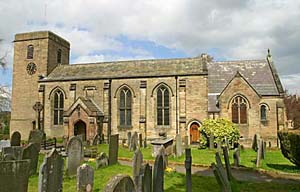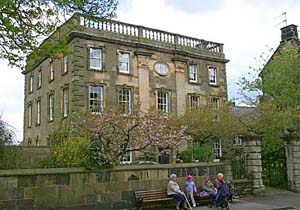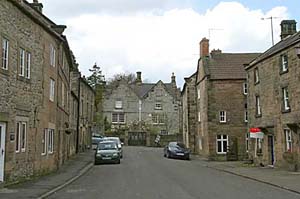Winster in Derbyshire and the Peak District, has charm and character, with a gracefully wide main street. Steep ginnels or little alleyways run from the main street and most of the village has bulged out up the hillside. Winster is famous for it's wakes and morris dancing.
Winster was once a lead mining centre and market town and has many 18th century houses. Market House is a delightful building of stone arches now filled in and an upper storey of brick and stone dressing. It was the first property in derbyshire acquired by the national trust back in 1906 and now acts as a tourist information centre, opening from april to september.

Winster |

Winster |

Winster |

Winster |

Winster |
Almost opposite winster market house is winster hall, believed to be haunted and once the residence of Liewellyn Jewitt, the derbyshire historian and local archaeologist. The doubled gabled Dower house, now a hotel has a 17th century date but most of the fine houses date from the 18th century heyday of the local lead mining industry-reflected in the name of the miners standard inn.The standard was a dish used to weigh the lead ore. Winster men used to work at the mill close mine, one of the most productive lead mines in the world and the largest in the peak district. It was worked for hundreds of years but in 1938 with no new ore in sight and the price of lead falling,the mine was shut down. The miners standard inn has a display of some old mining equipment and a water pressure engine was discovered in a nearby mine and has been re-created in the Peak Mining Museum at Matlock Bath. It had originally been built at Coalbrookdale in 1819 for the Alport mines near to Youlgreave, before being moved to Winster nearly 30 years later.
Winster used to be full of pubs and at one time there were over 20 of them. On one private house on the west bank the name `shoulder of mutton is carved by the door. Indeed, it was thought that beer was a cure for lead poisoning, a constant problem for the miners.
During Wakes Week, held in June/July of each year, the Winster morris men perform their dances. A procession leads through the village finishing at the miners standard inn for refreshment. The procession used to consist of 16 dancers led by a King and Queen both looking dignified and well dressed. A jester would prance around them whilst a witch went through the motions of sweeping the road before them with a broom. Winster morris men are one of the oldest troupes in the country with their own dances and tunes and they remain very popular at local festivities. Blue eyed stranger and the winster gallop are 2 of the best known morris tunes in the country and played wheresoever the cotswold tradition of morris dancing is followed, but their home is Winster. At the turn of the 20th century, the tunes were collected by the legendary Cecil Sharpe and were rediscovered in the folk revival of the 60`s and 70`s.
On Shrove Tuesday of each year, the local pancake race takes place. It all began as harnless fun organised by the local head teacher as a war time diversion for children but is now a seriously lighthearted affair with secret training and stringent rules about the batter.
The parish church of St John the Baptist has an unusual 2 aisled nave which was added in 1833 and which is divided by a lofty arcade. The tower dates from 1721. The village curfew bell still ring at 8 o`clock in the evening.
Directions to Winster
Follow the A6 out of Matlock heading towards Bakewell, then take a left turn onto the B5057. Pass over the old Darley bridge and continue for a further 2 miles. There is only on street parking, and toilet facilities can be found behind the bowling green inn.